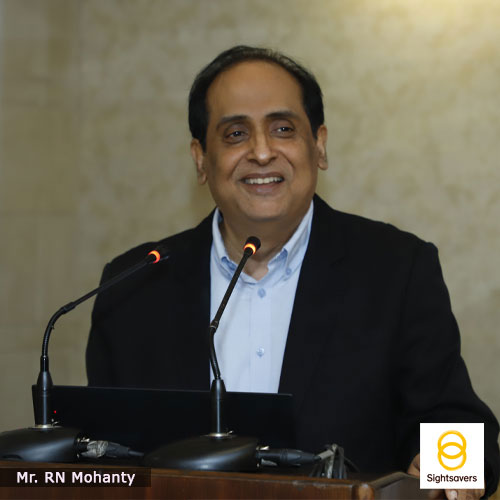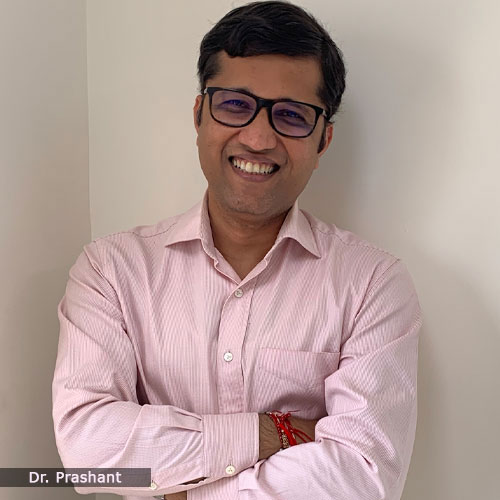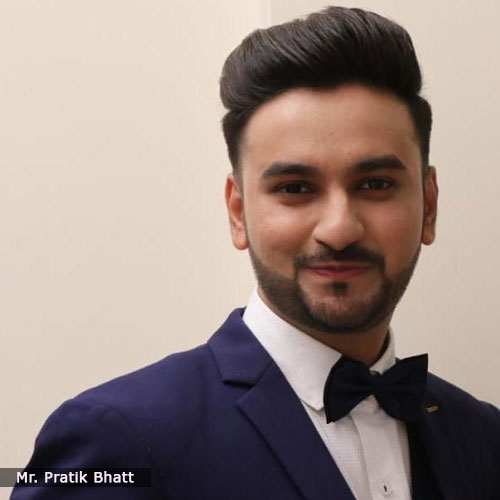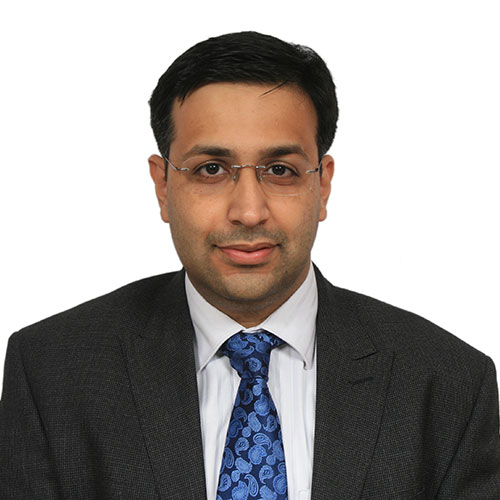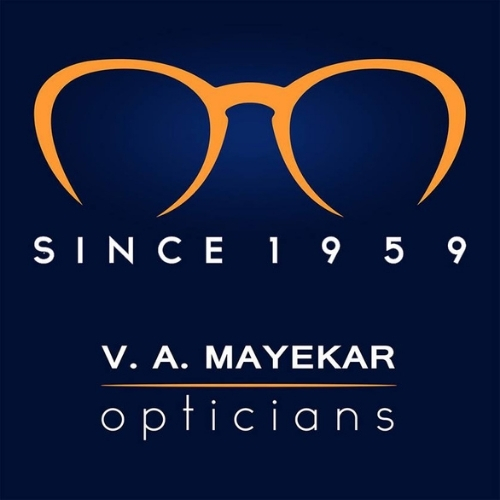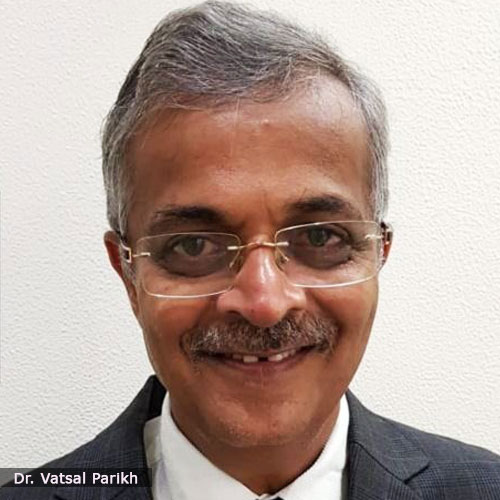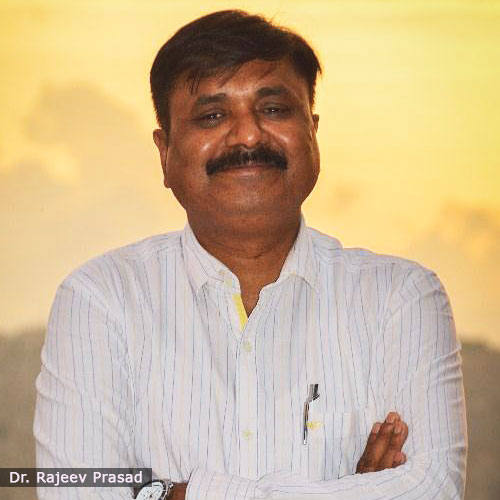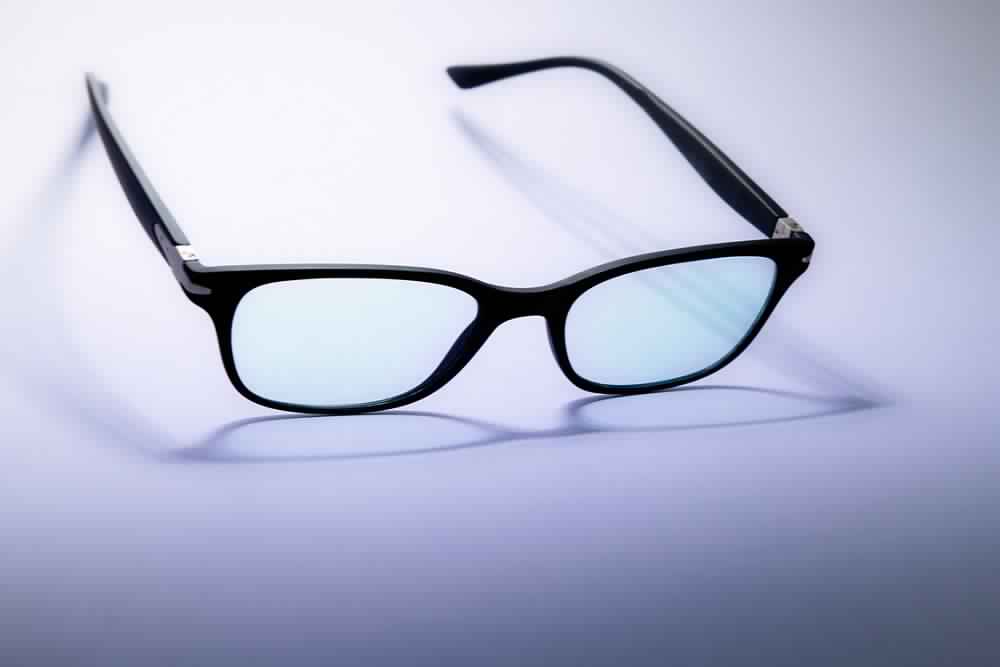ABOUT: SHROFF EYE CENTRE
With a unique legacy of a 100 years and 4 generations of providing quality eye care to, Shroff Eye Care today consists of the Shroff Charity Eye Hospital (SCEH) group and Shroff Eye Centre, which are both super-specialty institutionssynonymous withstate of art equipment, the highest level of professional excellence and ethical values in ophthalmic care.The Shroffs have been pioneers in the field of professional eye care in northern India. The foundation for excellence in eye care was laid by Dr S. P. Shroff, Fellow of the Royal College of Surgeons of Edinburgh, U.K. who started Ophthalmological work in Delhi in 1914. By 1926 he had established “Dr Shroff’s Charity Eye Hospital” at Daryaganj, Delhi, the first hospital of its kind in northern India, equipped with the best instruments and facilities available at that time. The tradition was carried forward by his son, Dr. Minoo Shroff. In 1973, Dr Minoo Shroff subsequently started Shroff Eye Centre. Motivated by the vision of Dr S.P. Shroff, both the hospital and the centre are committed to providing patients with the best possible eye care while maintaining the highest levels of honesty and integrity
WEBSITE: https://www.shroffeyecentre.com/
ABOUT: DR DARAIUS SHROFF
Dr. Daraius Shroff is one of the Medical Directors of Shroff Eye Centre also a trustee on the board of SCEH. He is an integral part of the team of ophthalmologists at Shroff Eye Centre, who utilize cutting-edge techniques to offer the best in diagnostics, medical and surgical careDr. Daraius Shroff completed his medical education (MBBS) and internship from Maulana Azad Medical College (MAMC), New Delhi. He did his Post Graduation (MS) in Ophthalmology from Guru Nanak Eye Centre, MAMC, Delhi University. He subsequently underwent vitreoretinal surgery super specialization training from the prestigious Sankara Netralaya in Chennai. He cleared both parts of the International Council of Ophthalmology Examinations. He was awarded a fellowship of the Royal College of Surgeons of Glasgow (FRCS) in 2010.Dr Shroff is part of the Core group of Delhi Retina Forum which includes dynamic retinologists from India and across the world. He has been part of the organising team for the prestigious Delhi Retina Meet since its inception.He has a strong interest in clinical research and has presented Scientific Papers and posters at various International and National Conferences. He has more than thirty-five publications in indexed peer reviewed International Journals. He has published articles on innovations in bimanual techniques as well as in advances in Imaging.He is interested and has been developing new techniques to make vitreoretinal surgery safer and more effective.He has won the prestigious Rhett Buckler Award at the American Society of Retina Specialists meeting in San Francisco in 2016.At SEC he has been using the latest SWEPT SOURCE OCT angiography which is a revolutionary new non-invasive technology for imaging the retina without the need for any dye in the body.He is part of the Editorial board of the Indian Journal of Ophthalmology, and is a reviewer for prestigious international ophthalmic journals including Ophthalmology, the American Journal of Ophthalmology and BMC OphthalmologyOur Editor-in-chief, Siddharth Salecha spoke with Dr Daraius Shroff, Medical Director and Vitreoretinal surgeon at Shroff Eye Centre to understand the contribution of Shroff group in the fight against curable eye diseases and preventable blindness in India.
THE INTERVIEW:
Firstly, what is the difference between Shroff eye care and Shroff eye centers?
Shroff Eye Care is a century old legacy of Ophthalmic care provided by our family. It consists of both a charitable hospital started by my great grandfather in the year 1926, which is now part of the SCEH group and Shroff Eye Centre (SEC).They are separate entities. SCEH is run by a board of trustees, which includes members of our family, and SEC is our clinical practice.
What were the challenges faced by the Shroff family to achieve what they have achieved today?
There were a lot of challenges to set up Eye care institutions over the years.
My great grandfather Dr. Sorabji Shroff was born in Bombay but his family served in the Punjab and he was brought up in and qualified as a doctor from King Edward Medical College, Lahore. Delhi became the new capital of the country in 1911 but lacked the medical institutions already set up in Bombay and Calcutta. In 1913,Sorabji decided to make the move from Lahore to Delhi. The young doctor saw hundreds of patients who flocked to him from all parts of North India. He was deeply affected by the plight of poor patients who could not even afford his very reasonable fees. He made a promise to himself that he would never turn away anyone who was suffering, even if they could not pay. Beginning by seeing patients free of charge, in his own private consulting chamber, his work became unmanageable as the numbers increased drastically.
In 1914, he began a charity eye hospital in a single room in the Dharamshala of Lala Laxmi Narain in the Walled city. When this one room, donated by a Hindu, became too small, a Muslim philanthropist, Haji Mohd. Ishaq helped this young Parsi, by giving one storey of his new building on Burnbastion Road for the medical and surgical treatment of poor eye patients. Thus, all communities worked together to help restore sight to the poor. Between 1st October 1916 and 30th November 1917, 16,771 patients were treated by Dr. Shroff at his dispensary in a period of 14months. Sorabji realized that North India needed a full-scale Charity Eye Hospital and so he created a Trust to help collect money to invest in a building and equipment required for modern Eye Hospital. Well-known personalities of Delhi came forward and because of his charitable medical work, Dr. S.P. Shroff secured land from the Government to complete the Dr. Shroff’s Charity Eye Hospital in Daryaganj.
My grandfather Dr Minoo Shroff from the 1980s onwards found it very difficult to run the hospital with minimal grants and appeals for funds, as providing eye care became more and more cost intensive. At this stage, the Eicher Group came forward to support the hospital with financial support and professional expertise.Prior to the invention of intraocular lenses, if you had a cataract it was removed, and you would have to wear thick glasses. When intraocular lenses (IOL)wereintroduced, everybody believed it was a time bomb in the eye. But despite a lot of criticism,my father started IOL implant surgery, as he was very certain that it was the future. He was one of the first people to do IOL surgery in the country and promoted and propagated its use. Nowadays, IOL implant surgery is the universal norm across the world.There have been challenges at each stage and each generation has faced different ones. Even today, providing affordable eye care without compromising ethics and standard remains a constant challenge.
What makes Shroff Eye Care stand out from the rest?
All eye centers today have the latest technology and the latest equipment, butour institution is unique because of two things:compassion and ethics. As you know without the heart the body cannot survive, similarly in our institution if a patient comes to our hospital, we don’t just treat him as a patient, butensure that the best possible thing is done for him in every regard. This is something I feel is incredibly unique and it comes with our ethos. The other factor is our team.We are lucky to have team members who are excellent professionals in their field. We do not just have four Dr. Shroffs, we have 35 eye specialists in addition. It is our team that is extraordinarily strong and covers all the subspecialties of ophthalmology. The team spirit and ethics is also what makes us standout.
Today, we have 4 branches in Delhi NCR and the Shroff Charity Eye Hospital is mainly in Daryaganj, but it also has satellite branches all over North India and especially Uttar Pradesh.
What made you choose to become a super Vitreoretinal surgeon?
I completed my MBBS from Maulana Azad Medical College (MAMC), Delhi and joined Guru Nanak Centre for my ophthalmic surgery training. At that time, my thesis guide Prof Mehta who was also the Head of the Department, had assigned the thesis which had to be done in the next 3 years, as a retina thesis. I was also assigned to a new machine which was called OCT which is Optical Coherence Tomography. It is a non-invasive way to examine the retina and, I was very fortunate because it was one of the high-volume government hospitals that had recently acquired OCT. So, my thesis was based on this and when you are working on something for that long your interest is kind of drawn towards it. Since the beginning I have been in ophthalmology, but I was drawn towards retina and then eventually turned into a VR surgeon.
What are the most common retinal diseases that you have encountered and how can these be prevented and treated successfully?
That’s a very important question because as a retina surgeon the most common disease we see is diabetic retinopathy.We need to get a little perspective about this as India is going to be the diabetic capital of the world. In the year 2011 India recorded about 31 million diabetic patients and in 2030 it is expected to rise at 79 million. A huge percentage of these patients will suffer from diabetic retinopathy which can cause irreversible blindness. The important message here is that anyone with diabetes should get a screening done as prevention is better than cure. So, if we detect diabetic retinopathy early, we will be able to prevent loss of vision and blindness in such patients. Anyone with an insulin-dependent type of diabetes should be screened within 5 years of their initial diagnosis.Those with a non-insulin-dependent or type 2 diabetes should have a retina check-up as soon as they receive a diagnosis. Ideally, anyone with diabetes should have a yearly checkup.
This is the way we can detect retinopathy at an early stage and plan out the treatment.In Diabetes, the retina gets swollen up or bleeds, which is not good. This can be treated by various techniques like laser photocoagulation and certain injections known as anti-VEGFs. Additionally, we have a lot of surgical maneuvers that are available which are helpful when the patient loses vision. But surgery comes last, before that we try out other ways to save the vision.However, the patient should have good metabolic control like a healthy diet, an optimal exercise in conjunction with the diabetologist so that these complications are less.
Can any person with diabetes be affected with retinal diseases?
Yes, anyone can be affected though duration is very important. Patients are most likely to get diabetic retinopathy after 5 years of the diagnosis. But it is always recommended to have a check-up once a year for early detection and treatment. A retina check should be apart of routine eye check-up for those with diabetes.
What is the Delhi Retina Forum about? Could it be attended by non-members?
We are a group of 6 surgeons who have laid the foundation of DRF in Delhi. DRF is a platform for learning, sharing, discussing retinal diseases, medical cases, surgical cases, for uploading videos etc.It is based on WhatsApp but we also have our online and real conferences twice a year. The latest conference was conducted in September but due to COVID-19 we had to do it online.As topics covered are highly specialized on complex retinal issues, we encourage retina specialists to attend. The best part about this is that we have eminent teachers and surgeons who are a part of this platform.So, when anybody posts a question or complicated cases, they get suggestions/solutions from around the world in a few minutes, that is the beauty of DRF. Doctorswithout a large team or additional expertiseare the ones benefitting from this a lot.As what really matters to us is best treatment possible for every patient. It is a good opportunity for younger VR surgeons to learn and incorporate the best practices. And yes, it is totally free of cost as we feel giving knowledge is everyone’s responsibility.
Does your organization take care of people who are not financially sound enough?
Yes, there are trusts that takes care of that in both places. In Shroff Charity Eye Hospital, a lot of international organizations and companies are helping through their corporate social responsibility programs. Moreover,theEicher Group is a vital part of the trust. Due to these generous donations, the best possible care is given to all sections of the society.
Could you share some of your techniques to make retina surgery safer and more effective?
One of them, interestingly, just got published in October 2020 issue of the Indian Journal of Ophthalmology. It is called the tug of war. In this technique basically, we use two instruments, again manually. So, when we have membranes or proliferation which is preventing the retina from coming down one option is to cut it off, but I prefer not to do anything destructive. As with both hands, we can remove any fibrosis or proliferation which is sticking and not letting the retina settle. So, this is one of the maneuvers that we described and one of them recently got published. The link to the article is :
https://www.ijo.in/article.asp?issn=0301-4738;year=2020;volume=68;issue=10;spage=2155;epage=2158;aulast=Shroff
The other one is for cases that have giant retinal tears. There is a bimanual technique we used for that also.These are some of the techniques that we use. The chandelier innovation has helped us improve our outcome and the result we can give to our patients.
Could you highlight on bimanual techniques?
Basically, when we do a retina surgery with one hand, we hold a light to show what we are operating and with the other hand we hold an instrument to cut or peel. But this is a challenge when we do complex or small maneuvers. In bimanual what we do is that we separate the light source, so just like we have a chandelier in our house to give light, here we put a chandelier in the eye. And then with two hands, we can perform the surgery. So instead of unimanual, we do bimanual which increases the accuracy of our surgical steps. One of the pioneers of this technique in India was my uncle Dr Cyrus Shroff, he virtually started modern vitreoretinal surgery in North India after training in early eighties with Dr SS Badrinath from SankaraNethralaya Chennai.
Is bimanual micro incision a common practice by retinal surgeons in India?
It is used quite often, but the only thing is that it requires certain investments in terms of finance and time. You need to have a separate light source -the chandelier More time is mainly required because an extra step is required. But according to me, it isn’t about time but about the results. If you are getting better results for your patient, then this technique is well worth it.
Have you taken any patents on your techniques?
No, wehaven’t because they are just techniques. We would like everybody to use these to heal a maximum number of patients.
So, this is one of my favorite questions. Where does India stand today in terms of health technology? How are all the hospitals and doctors adapting to this?
Well, we are advanced in health technology. Earlier technological advancements happened in the West and it took years to come to India but that’s far from the truth now. All facilities available in the West come to India almost immediately because it’s a very lucrative market.But these advancements in technology need to reach all sections of society in India, which is a major challenge. SCEH is doing the most of that in peripheral regions where the facilities arelacking and the population is in dire need. They’re doing it on a small-scale but it has to be carried out on a large-scale through NGOs, charitable organizations, etc.
I would like to talk about imaging now as that is a major technological advancement in my field.
Through Imaging, you can look inside the eye. You require imaging for the retina since it is positioned at the posterior-most region of the eye next to the optic nerve that transmits the impulses to the brain. We have wonderful machines that help us image the retina. Firstly, we have the OCT that takes a histologic image, it almost seems like we are viewing a patient’s eye under a microscope inside a lab. So, it is a great way to view the retina with a patient sitting comfortably in front of you.
The principle behind the technology used here is through the speed of light. As the speed of light travels faster than the speed of sound we can get the resolution of 5 microns to view the cells of the retinal fluid. In diabetic patients, there is a build-up of fluid behind the eye and this technology facilitates us to catch the fluid build-up early so we can take preventive measures. Earlier on, we used to perform angiography in the eye, which means injecting the retinal blood arteries with a dye to capture the image. With the latest technology, we can capture images without injecting any dyes and obtain imaging without touching the patient and it is a very revolutionary technology in this field. It is exciting because these few things are helping us take care of our patients in a very non-invasive way. Especially with COVID, it is beneficial to get the procedure done without touching the patient and vice versa. It is non-contact!
How are you seeing patients with the current lockdown restrictions?
We arevery careful when it comes to safety. For us, the safety of our patients, doctors, and staff is very important. We’re taking all the necessary precautions and we’ve modified a lot of our equipment at the reception and in the premises. We wear face shields; two masks and we have a plastic covering that is breath-resistant and minimizes exposure on most of our equipment. Our staff is also using gloves, gowns, etc. to prevent the risk of spread. It is uncomfortable, but this is something we have to do because it is important for us and our patients.
But frankly, what do you feel about COVID-19? How bad is it?
Many people are taking it lightly but when it hits you, you realize how bad it can be. From a public health perspective, there are plenty of other diseases that are also killing people like tuberculosis, but currently only COVID-19 is being highlighted because it is so infectious. Also, it is affecting all strata of society and all age groups so that is important. Not only people from villages or those who don’t have access to health-care but everyone and in all parts of the world.
With the enhancements in digitalization, if you could give some tips to our readerswhich might help them take self-care?
There are two damagingaspects faced by the constant usage of digital media. One is what it does to the eyes and the other, what it does to our minds. Everyone is addicted. Even children are glued to smartphones and tablets all day. So not just eyes think about the impact it is having on our minds, our way of thinking.As we understand now that all work is done through the computer, we should move the entertainment off it. We should encourage children and adults to participate in puzzles, outdoor activities, and reading books. But also, younger children should be kept away from screens and from social media as that is addictive and dangerous. I recently saw a documentary on Netflix THE SOCIAL DILEMMA, It is very scary.So here are some tips for the eyes –
1. The bigger the device, the better. Instead of using a cellphone, use a larger device like a desktop or a computer for your children. That is better and gives less strain to the eyes.
2. Gaps should be taken. It’s not advisable to view screen for hours at a time. Avoid excessive usage as much as possible and you can also get lubricant drops over the counter that are especially good for adults who are computer professionals. Our pediatric ophthalmologistgives a rule of 20-20-20. After working for 20 minutes, look away for 20 seconds and look at objects around you that are 20 feet away. This rule is great to overcome the digital strain.
How do you manage to keep your energy levels up even after hours of working, wearing PPE kits and all the equipment?
The one thing that keeps me going is thatI enjoy mywork can go on for hours without feeling tired. Secondly, having a very good team helps when everyone is looking after each other. If at all somebody is down, someone else is there to take over. In that way, we are very lucky to have such a team. Thirdly, we need to be positive and have a positive state of mind because the moment negativity takes over, it drains you. It was our privilege having a chance to converse with you, Many Thanks!




